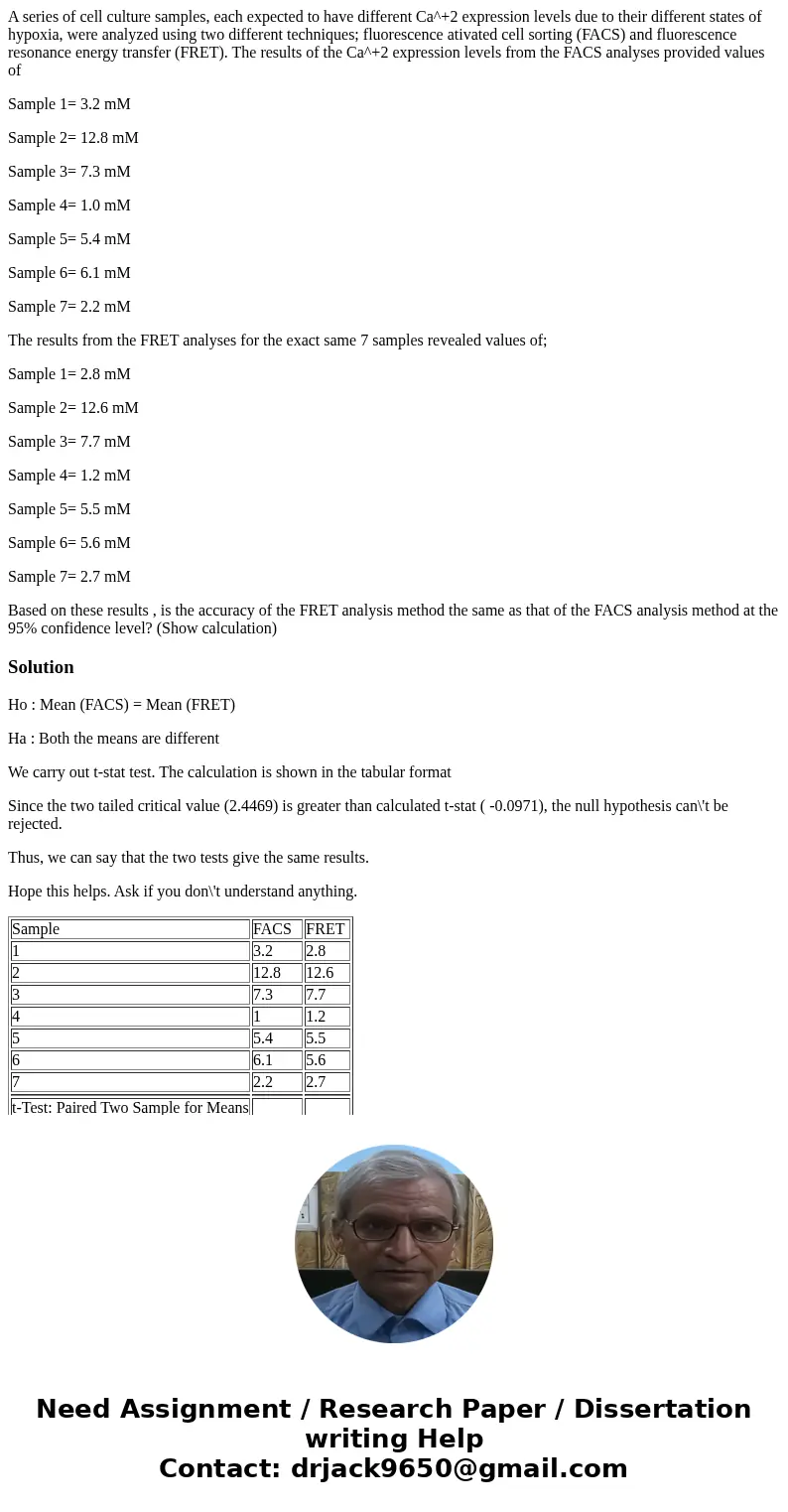A series of cell culture samples each expected to have diffe
A series of cell culture samples, each expected to have different Ca^+2 expression levels due to their different states of hypoxia, were analyzed using two different techniques; fluorescence ativated cell sorting (FACS) and fluorescence resonance energy transfer (FRET). The results of the Ca^+2 expression levels from the FACS analyses provided values of
Sample 1= 3.2 mM
Sample 2= 12.8 mM
Sample 3= 7.3 mM
Sample 4= 1.0 mM
Sample 5= 5.4 mM
Sample 6= 6.1 mM
Sample 7= 2.2 mM
The results from the FRET analyses for the exact same 7 samples revealed values of;
Sample 1= 2.8 mM
Sample 2= 12.6 mM
Sample 3= 7.7 mM
Sample 4= 1.2 mM
Sample 5= 5.5 mM
Sample 6= 5.6 mM
Sample 7= 2.7 mM
Based on these results , is the accuracy of the FRET analysis method the same as that of the FACS analysis method at the 95% confidence level? (Show calculation)
Solution
Ho : Mean (FACS) = Mean (FRET)
Ha : Both the means are different
We carry out t-stat test. The calculation is shown in the tabular format
Since the two tailed critical value (2.4469) is greater than calculated t-stat ( -0.0971), the null hypothesis can\'t be rejected.
Thus, we can say that the two tests give the same results.
Hope this helps. Ask if you don\'t understand anything.
| Sample | FACS | FRET |
| 1 | 3.2 | 2.8 |
| 2 | 12.8 | 12.6 |
| 3 | 7.3 | 7.7 |
| 4 | 1 | 1.2 |
| 5 | 5.4 | 5.5 |
| 6 | 6.1 | 5.6 |
| 7 | 2.2 | 2.7 |
| t-Test: Paired Two Sample for Means | ||
| FACS | FRET | |
| Mean | 5.429 | 5.443 |
| Variance | 15.549 | 14.810 |
| Observations | 7 | 7 |
| Pearson Correlation | 0.995 | |
| Hypothesized Mean Difference | 0 | |
| df | 6 | |
| t Stat | -0.0971 | |
| P(T<=t) one-tail | 0.4629 | |
| t Critical one-tail | 1.9432 | |
| P(T<=t) two-tail | 0.9258 | |
| t Critical two-tail | 2.4469 |


 Homework Sourse
Homework Sourse